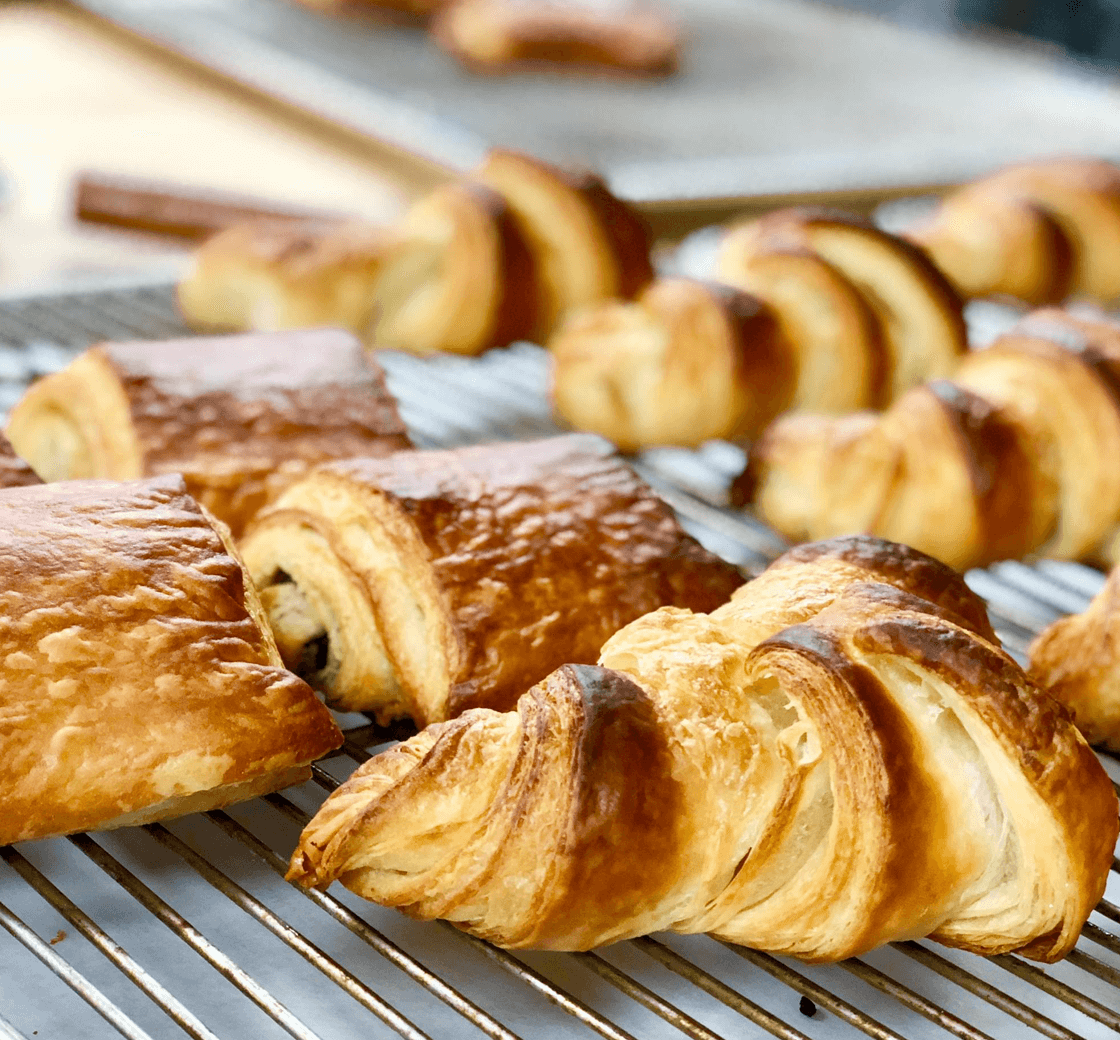
Have you ever wondered how to make the buttery, flaky brioche loaves and croissants found at fancy bakeries? This class will show you how. During Day 1 of this two-day workshop, you’ll learn how to see the process through, from creating the dough to letting it rise to shaping your own luscious baked goods. On Day 2, you'll complete a menu of: brioche à tête (brioche in the classic fluted, top knotted shape); pain au raisins; classic croissants; almond croissants; chocolate croissants; and croissant monkey bread.

You will work in teams to execute the class menu. At the end of class, participants gather to enjoy the food they have prepared. Wine is served with meals in most classes. All class menus are subject to change. While a snack platter is offered in both morning and evening classes, you may want to consider a light snack before joining us for class. Students are encouraged to bring a light lunch or dinner to all pastry classes.

You will work in teams to execute the class menu. At the end of class, participants gather to enjoy the food they have prepared. Wine is served with meals in most classes. All class menus are subject to change. While a snack platter is offered in both morning and evening classes, you may want to consider a light snack before joining us for class. Students are encouraged to bring a light lunch or dinner to all pastry classes.
Join an ICE chef for this delightful class on all things pizza. Together, couples will learn to make a quick-rise pizza dough to be topped with a variety of culinary creations: sauce and cheese will meet veggies, mushrooms, cured and fresh-cooked meats --- even sweet options for dessert pizza. Then you’ll sit down to each fresh-from-the-oven pie with a choice selection of pizza-perfect wines that pair with your imaginative culinary creations.
From coasts to prairies, the diverse geography of America results in an abundance of meat and fish varieties that eventually end up on our plates, deliciously prepared. In this class, you will prepare dishes that celebrate this bounty and highlight famed regional preparations. On your menu: Chesapeake Bay crab cakes with sauce rémoulade; New York strip steak with onion rings; and broccoli-cauliflower gratin.
Once you master essential cooking techniques, you possess the culinary grounding to cook both classical cuisines and the latest cooking styles. These full-participation classes teach fundamental skills, not just recipes. Most important, you'll gain the experience you need to cook with confidence and pleasure---without relying strictly on recipes. Each class culminates with a student-prepared meal. The course consists of four 6-hour classes. Fine Cooking 1 is a prerequisite to Fine Cooking 2. The course completes in four days.
Ranked as America’s Best Culinary School (USAToday 2019), our roster of Chef-Instructors have run top kitchens around the globe.
| (Separate multiple addresses with commas like: john@aol.com, jane@aol.com) | |